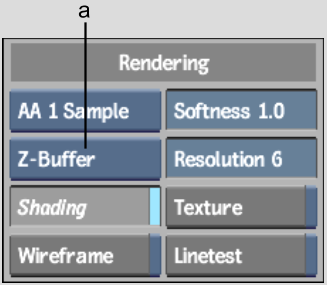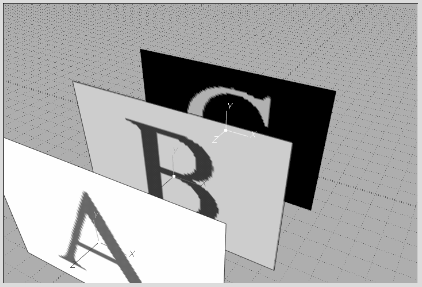When you use Analyse or Z-Sort, the objects in the scene are compared using their position in the scene and not the individual pixels of a shape or model. The Priority Editor uses distance between the camera and the nearest and farthest points on the objects in the scene to determine the sorting order.
Since the Priority Editor is geometry based and not polygon based, you cannot properly order objects or groups that intersect due to their rotation, scale, or shear values. The Z-buffer uses the Z-value of each pixel for the sorting order. Use the Priority Editor in conjunction with the Z-Buffer box in the Setup menu Rendering section.



(a) Z-buffer box
When Z-buffer is on, objects and groups are arranged according to their distance from the camera eye. Since the camera is pointed towards the Z-axis by default, objects and groups are arranged according to their location on the Z-axis. In the following example, Image A is at Z position 200, Image B is at Z position 100, and Image C is at -50. When Z-buffer is on, Action draws these images as shown.



If you move the camera, objects are sorted according to the axis the camera is pointed towards.
When Z-buffer is off, the distance of objects from the camera eye is not considered. Objects are drawn in the order shown in the Priority Editor. To follow the previous example, you can turn off Z-buffer and change the priority of Image B so that it is drawn on top of both Image A and Image C. The Z position of these images is therefore ignored.



Shadow Mix, like Z-buffer, arranges objects according to their distance from the camera eye. Use Shadow Mix so that each shadow is rendered in the correct Z order with its corresponding surface.